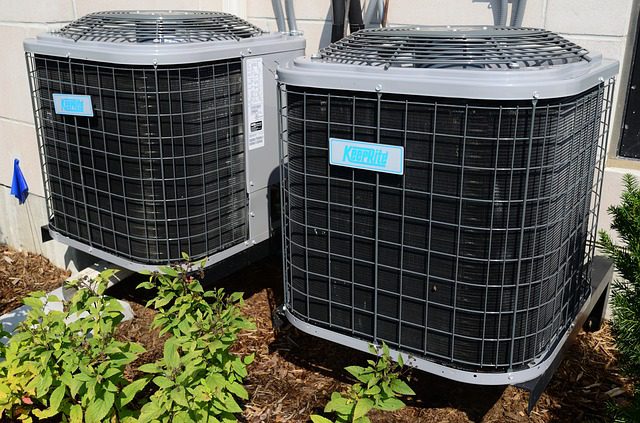AC Cooling Capacity Is Stated in ‘Tons’ but What Does That Mean?

You may have heard the word “ton” used in reference to the size of a central air conditioning system, then made the understandable error of figuring that a ton, in this reference, means what it means in nearly every other technical context, 2,000 pounds. That’s not the case, however. In the AC context, a ton refers to a system’s cooling capacity, and dates back to pre-modern times when people cooled buildings with ice taken from rivers, ponds, lakes and even oceans.
How Do You Calculate an AC ‘Ton’?
A ton, in HVAC/air conditioning terminology, refers to the amount of heat energy that an AC can remove from a building in an hour. A 4-ton air conditioner – which is a common residential size – is designed to remove 48,000 Btu’s (British Thermal Units) of heat energy from the air. (Another odd note: A Btu is the degree of heat emitted when a standard kitchen match burns all the way down.)
So how does this relate back to ice? It takes 143 Btu’s per pound to completely melt a ton of ice. That works out to 286,000 Btu’s. Worked out to a full day, the ton of ice will absorb 11,917 Btu’s of heat energy per hour before it’s totally melted. That number is rounded up to 12,000 Btu’s per hour, which comprises a “ton” of an AC or heat pump’s cooling capacity.
Sizing an Air Conditioner or Heat Pump
In order to select the right cooling system for any home or business, correct sizing is essential. In the old days (and continued today by some installers!), rule-of-thumb methods were common, such as recommending a ton of cooling capacity for each 600 square feet of space in a building.
Modern HVAC professional installers avoid these easy methods, since they don’t take into account a variety of factors that make each building unique. Instead, the industry standard for modern AC installation is the Manual J cooling load calculation. (The cooling load is the amount of cooling that’s required to make a particular home or building comfortable.) Factors employed in making this calculation include, of course, the home’s size, but also its layout and number of floors, efficiency (amount and type of insulation and air sealing), the home’s orientation on the lot, location and size and type of windows, among other factors.
With the Manual J calculation in hand, the installer can recommend the proper capacity for your new central AC or heat pump system.
Why You Don’t Want to Undersize or Oversize Your New AC
Many homeowners assume that when it comes to an air conditioning or heating system, bigger is always better. This isn’t the case, and not only because a larger system is more expensive. A cooling or heating system that’s oversized will short-cycle, stopping and starting frequently. This is because the larger system will satisfy the thermostat setting quickly, shutting down the current cycle. This creates stress in the blower or air handler, wastes energy, and delivers unbalanced cooling and heating. It can lead to system breakdowns and a shorter service life for the AC, heat pump or furnace.
On the other hand, the problem with an undersized cooling or heating system is obvious – it will struggle to do its job, which also will create stress in the equipment.
If you’re working with a trusted professional HVAC contractor, they should take the time and energy to make sure your new cooling or heating system is just the right capacity for your home, for ideal performance and efficiency.
